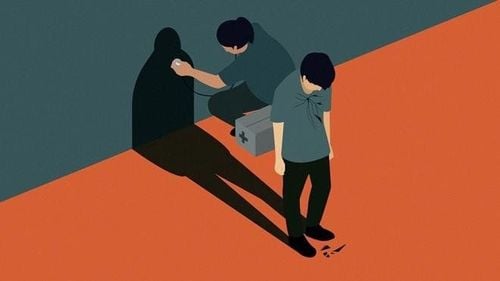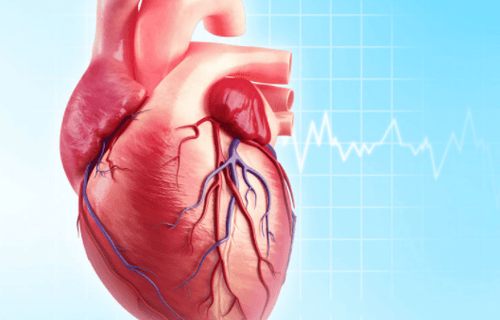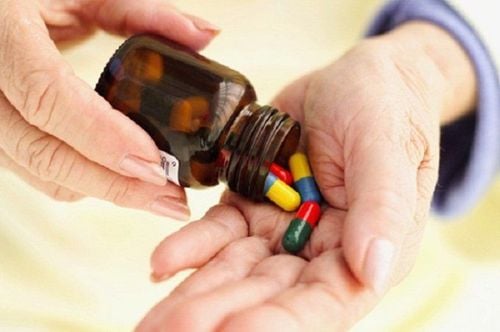This is an automatically translated article.
The article was written by Rehabilitation Doctor - Department of General Surgery & Anesthesia - Vinmec Hai Phong International General Hospital.Language disorder after stroke is a sequela that severely affects the patient's life. After a stroke, there are many types of speech disorders depending on the extent of damage to different brain regions. However, the patient's language ability can be restored with perseverance and proper practice based on their own efforts along with the support of doctors and families.
1. Language disorders caused by sequelae after cerebrovascular accident
Language disorders are a very common sequelae, accounting for 40% of cases of stroke patients. Language disorders due to brain damage make the patient's voice distorted, when pronouncing the last vowel sound, stuttering, babbling. The patient's voice changes, the rhythm of speech and the intonation of the language are changed.Based on the location of brain damage, speech disorders after a stroke can be divided into the following cases:
Injury to the language producing area (Broca's area injury): This is the most common case. ; The patient understands what he wants to say and what others say to him, but cannot say it, or can only say a few words, speaking in a shy manner. If the damage is mild, the patient can speak, but the ability to speak is poor, and it is difficult to repeat the words of others or their own. Injury to the language understanding area (Wernicke's area lesion): The patient can speak, speaks fluently but does not understand or understands only a very small part of what others say to him or her. meaninglessness and poor repetition of other people's sentences. Damage to the connecting pathway between the language producing area (Broca's area) and the language understanding area (Wernicke's area) related to speech function: The patient has the ability to speak and understand well but repeat other people's sentences or own poor. People with conductive aphasia are still aware of their shortcomings and try to correct themselves. Total damage to all areas of language function: The patient cannot speak or speak very poorly, not fluently, with poor comprehension and repetition.
2. Consequences of language disorders due to cerebrovascular accident
Consequences of language disorders of cerebrovascular accident make it difficult for patients to communicate with others, thereby leading to difficulties in daily activities requiring assistance. This will make the patient live a closed life, low self-esteem, depression, poor health.Persistence in exercise helps patients recover their language ability, other brain areas will maximize their ability to compensate for damaged language control brain areas. All types of lesions after the training process improved, in which the damage to the language production area (Broca area) was the best restored.

Rối loạn ngôn ngữ có thể khiến bệnh nhân trở nên khép kín, tự ti do khó khăn trong giao tiếp với người khác
3. Home exercises for patients with speech disorders due to cerebrovascular accident
3.1 Objectives To help patients correct speech and language impairments and disorders to have language and speech as close to normal as possible. Promote all abilities, all forms of communication both verbal and non-verbal, including the use of alternative assistive devices such as voice aids or communication signs so that the patient can communicate the best. 3.2 Methods of home practice 3.2.1 In case if the patient understands well, but does not speak many words Relatives will use pictures, drawings or everyday objects to guide and introduce each object's name. Ask the patient to repeat. Then put the objects away, then bring each object out to ask and ask the patient to repeat. Relatives help describe an object so that the patient can find a suitable name. (Example: What to use for combing – the patient might find the word “comb”; What to use for drinking water – the patient might find the word “cup”....). If the patient says the name of a difficult object, instruct the patient to use gestures and signs to express it. Instruct the patient to speak while using signs to communicate. Priority is to practice saying the names of some nearby objects such as cups, cups, bowls, chopsticks, tables, chairs, cabinets, colors, numbers, dates, letters,... 3.2.2 If the patient can speak single words Instruct the patient to combine single words into a short sentence, then a longer sentence. Prioritize guiding the patient to say simple words such as: Drink water, eat rice, urinate, hunger, stomachache, headache,... so that the patient can ask relatives to support basic needs during the day. Relatives use pictures for the patient to describe by pictures (Example: Show the patient pictures of familiar topics such as family members and then ask the patient to describe the picture by answering questions such as: Who is that person? How old is that person? What is he doing?...). Play games such as finding antonyms: far-near, hot-cold, over-under, games that describe objects and people, and encourage the patient to list as much as possible a list of objects such as fruits. , animals or flowers. Speaking practice needs to take place continuously and persistently every day. Relatives often talk and interact with the patient. Encourage the patient to retell the short stories he has heard. Have the patient practice reading a few words, from shorter to longer. When reading ability improves, the patient can read books and newspapers. If possible, encourage the person to sing some favorite songs, including Karaoke
Khả năng ngôn ngữ của người bệnh có thể hồi phục nếu kiên trì và luyện tập đúng cách dựa trên sự nỗ lực của bản thân cùng với với sự hỗ trợ của thầy thuốc và gia đình
4. Some points to pay attention to when practicing
Encourage the patient and family members to use a variety of communication strategies, such as gestures, facial expressions, speaking, reading, writing, and drawing. Relatives, when instructing the patient, should note that speaking slowly, without interruption, using communication aids, gestures, and drawing if necessary. Practicing as early as possible is beneficial, so starting from easy to difficult, creating a happy environment, always encouraging, cheering and encouraging when practicing to avoid the patient feeling like a child. Should divide the exercise into several times of the day, avoid practicing too much at the same time so as not to cause fatigue for the patient. Regularly change the way to practice, the place of practice, family members should take turns to support the patient, when practicing, the patient should be encouraged to speak as loudly as possible. The most important thing is to help the patient be optimistic, persevere in practice, and not let the patient get discouraged or give up. If depressed, give up, then the treatment will fail. To have a chance to improve and reverse the sequelae of a language disorder, it takes persistence and determination from both the patient and the caregiver. Often, communication problems improve gradually over weeks and months if the patient is trained early, consistently, and correctly.The human brain can often adapt and acquire new skills to partially make up for what it has lost. However, some patients may have long-term communication problems. So, with the support of loved ones, people may need to learn new ways to connect with their loved ones. When people work together and try different techniques, it can help the person continue to improve their communication and find a common language they can share.
If you try hard, the patient has a perfect chance to regain his ability to communicate and reintegrate into the community.

Nếu cố gắng, người bệnh tai biến mạch máu não hoàn toàn có cơ hội tìm lại được khả năng giao tiếp của mình và tái hòa nhập với cộng đồng
Please dial HOTLINE for more information or register for an appointment HERE. Download MyVinmec app to make appointments faster and to manage your bookings easily.













